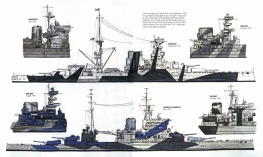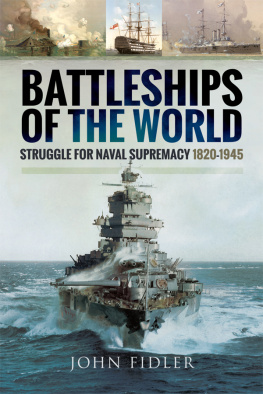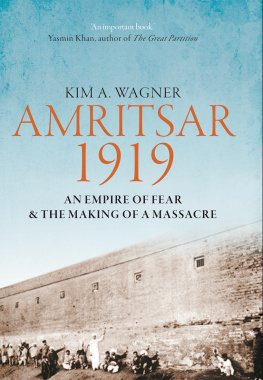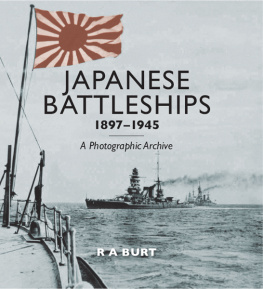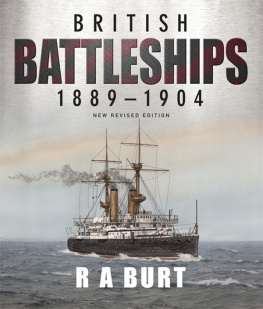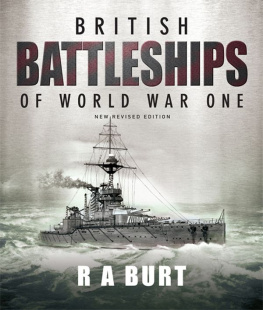R A Burt - British Battleships 1919–1945
Here you can read online R A Burt - British Battleships 1919–1945 full text of the book (entire story) in english for free. Download pdf and epub, get meaning, cover and reviews about this ebook. year: 1993, publisher: Seaforth, genre: History. Description of the work, (preface) as well as reviews are available. Best literature library LitArk.com created for fans of good reading and offers a wide selection of genres:
Romance novel
Science fiction
Adventure
Detective
Science
History
Home and family
Prose
Art
Politics
Computer
Non-fiction
Religion
Business
Children
Humor
Choose a favorite category and find really read worthwhile books. Enjoy immersion in the world of imagination, feel the emotions of the characters or learn something new for yourself, make an fascinating discovery.
British Battleships 1919–1945: summary, description and annotation
We offer to read an annotation, description, summary or preface (depends on what the author of the book "British Battleships 1919–1945" wrote himself). If you haven't found the necessary information about the book — write in the comments, we will try to find it.
British Battleships 1919–1945 — read online for free the complete book (whole text) full work
Below is the text of the book, divided by pages. System saving the place of the last page read, allows you to conveniently read the book "British Battleships 1919–1945" online for free, without having to search again every time where you left off. Put a bookmark, and you can go to the page where you finished reading at any time.
Font size:
Interval:
Bookmark:
BRITISH
BATTLESHIPS
19191945
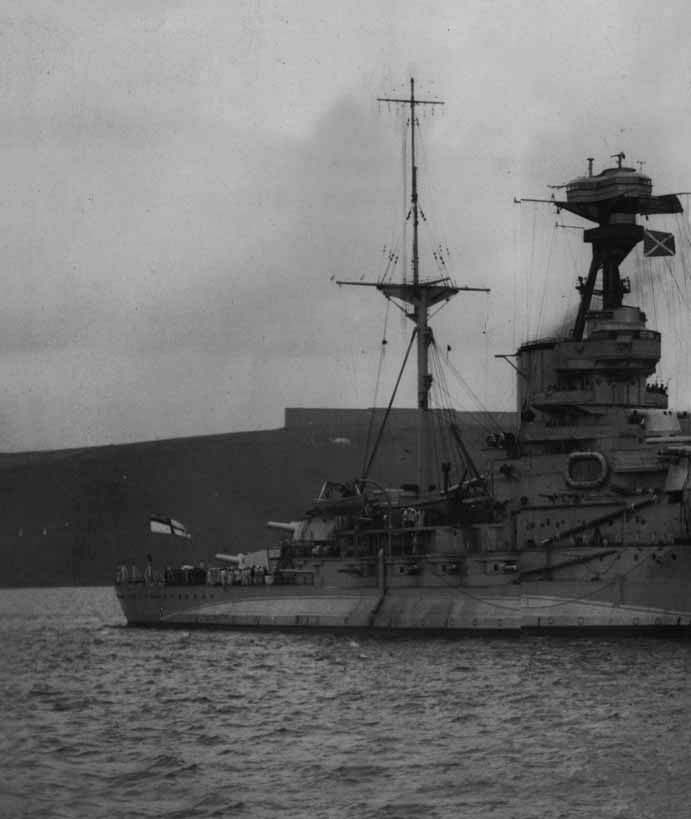
BRITISH
BATTLESHIPS
19191945
R A BURT
Seaforth
PUBLISHING
Title page:Ramillies fresh out of refit, Devonport, April 1927.
Acknowledgements
The author is indebted to the following establishments and
persons:
The staff of the National Maritime Museum, Greenwich.
The staff of the Public Record Office, Kew.
In particular I should like to extend sincere thanks to John
Roberts for all his help; to J. Hitchon, A. S. Norris and R. Wilson
for help with material; and appreciation is also due to T. W.
Ferrers-Walker for material and for great encouragement
throughout the preparation of the book.
Finally to my wife, Janice, who put a lot of effort into this book
in the way of research, typing and checking.
R A Burt
Copyright RA Burt 1993
This edition published in Great Britain in 2012 by
Seaforth Publishing, an imprint of Pen & Sword Books Ltd,
47 Church Street, Barnsley S70 2AS
Reprinted 2013
www.seaforthpublishing.com
British Library Cataloguing in Publication Data
A catalogue record for this book is available from the British Library
ISBN 978 1 84832 130 4
All rights reserved. No part of this publication may be reproduced or transmitted in any form or by any means, electronic or mechanical, including photocopying,
recording, or any information storage and retrieval system, without prior permission in writing of both the copyright owner and the above publisher.
The right of RA Burt to be identified as the author of this work has been asserted by him in accordance with the Copyright, Designs and Patents Act 1988.
Typeset and designed by Stephen Dent
Printed and bound in China by 1010 Printing International Ltd.
Contents
T he period from 1919 to 1939, although a time of peace between the major powers, probably produced more wartime ideas than the hostilities themselves. The naval treaties that brought a halt to capital ship construction (from 1921) meant that the time and money available was spent either on the reconstruction of existing warships, or on basically new designs to be built as soon as new programmes could begin. It was a time when Jack could join up and see the world without fear of having to fight for his country (although always ready to do so).
Commissions came and went, bringing a much needed showing of the flag, and no memories are fonder than when an old salt recalls his happy days aboard one of His Majestys battleships. During those years it seemed that the Royal Navy was still the major force on the oceans, even though her ships had reduced in number to parity with the US Navy. The Union Jack still counted for something and the Royal Navy was still the Senior Service in more ways than one. Indeed, it had the most battle experienced ships and crews, and had carried out some of the most meticulous tests against old battleships ever witnessed.
Although there was much change so far as reconstruction was concerned, on the whole the administration and policies of the Royal Navy were little altered and Fleet practice and exercises were carried out in a fashion similar to those current during the First World War. The Admiralty saw no reason to change its thinking in this regard; it considered the battleship to be supreme despite the many critics who believed that the day of the big ship had passed. The aircraft carrier, still not fully developed, came into its own during the inter-war years, but at that time the main strength was still envisaged as lying in straight battle divisions that would engage an enemy line when required to do so.
True, future action would differ from the Great War, given the greatly reduced numbers in the type, but even though Japan and the USA were looking towards the aircraft carrier and submarine, all major powers still struck up a massive construction programme of battleships during the years leading up to the Second World War. British battleship designs often take a knock, and lately it has become trendy to highlight their faults, but this is probably because it is comparatively easy to analyse a service that has such a long history of battle experience. Most British battleships were a compromise no battleship ever constructed was perfect, but they contended with attacking aircraft, torpedoes, mines, submersibles, contemporary battleships and finally all weathers in all sea conditions throughout the world.
It is a simple matter to compare ship against ship statistics on paper, but it means very little in practical terms; actions speak louder than words and when one examines the record of the British battleship from 1919 to 1945, the Royal Navys designers, the crews serving them and the vessels themselves, it becomes clear that they had little reason to pay heed to derogatory opinions. They did all that was asked of them and sometimes paid a heavy price. As war approached in 1939 the Admiralty was all too aware that the Royal Navy was ill equipped and unready, but naval treaties, politics and financial restrictions had all taken their toll of the service since 1919. War was hard for the Navy the second time around, and by 1941 capital ships had been seriously depleted. There were few new ships and many of the older ones were in great need of modernization and long-awaited refits. The battle was pursued, however, and by 1942 the tide had turned, but the battleship had taken second place to the aircraft carrier as the most important unit in the fleet. Policy and battle tactics in the Atlantic and Pacific had altered drastically and it no longer seemed imperative to have a massive battlefleet as had been the case in 1939. The all-important weapons were carriers and fast light AA cruisers to look after them. The new enemy would now come from the air, not from over the horizon.
And what of the ships themselves, the mighty battleships those floating leviathans of the worlds oceans, that had inspired the serviceman, the journalist and the general public for generations. The sight of a friendly battleship imparted a sense of visual pleasure and powerful reassurance. Crowds would flock to the sea front at Portsmouth and Devonport to see one return from a commission. On many a visit to a foreign port hundreds would gather to see the British Fleet entering their harbour. They would glide in, gondola like, over a sun-blessed sea through schools of dolphins, while overhead convoys of seagulls kept close vigil for titbits. On board, a cacophony of noise as the off-duty watch prepared to come up on deck. Many were sun-worshippers, particularly those that had just left the inclement weather of Pompey or Guz. Hatches and scuttles were opened and the awnings would go up as soon as the anchor had been dropped. The Kings ships had entered harbour in all their glory usually with main armament at salute elevation freshly painted in the light grey (almost bleached white in the bright sunshine) Mediterranean colours. Anchors aweigh! sounded and the Fleet came to rest Jack was in for some well-earned leave ashore and he would hope, a good stretch before having to return to a home port. Romantic it may sound, an idyllic picture it may seem, but this was the scene that had not changed for hundreds of years; this was the life to which Jack was accustomed (even though times in general were extremely hard during the 1920s and 1930s), and these were the battleships with which he was so familiar.
Life was never dull for long when serving on board a capital ship one day nothing much, but the next might well bring a double shift. During the lull in capital ship construction (1919 to 1939) the crews carried on regardless with what ships they had. The following views show a lifestyle that was familiar to the British matelot.
Next pageFont size:
Interval:
Bookmark:
Similar books «British Battleships 1919–1945»
Look at similar books to British Battleships 1919–1945. We have selected literature similar in name and meaning in the hope of providing readers with more options to find new, interesting, not yet read works.
Discussion, reviews of the book British Battleships 1919–1945 and just readers' own opinions. Leave your comments, write what you think about the work, its meaning or the main characters. Specify what exactly you liked and what you didn't like, and why you think so.

